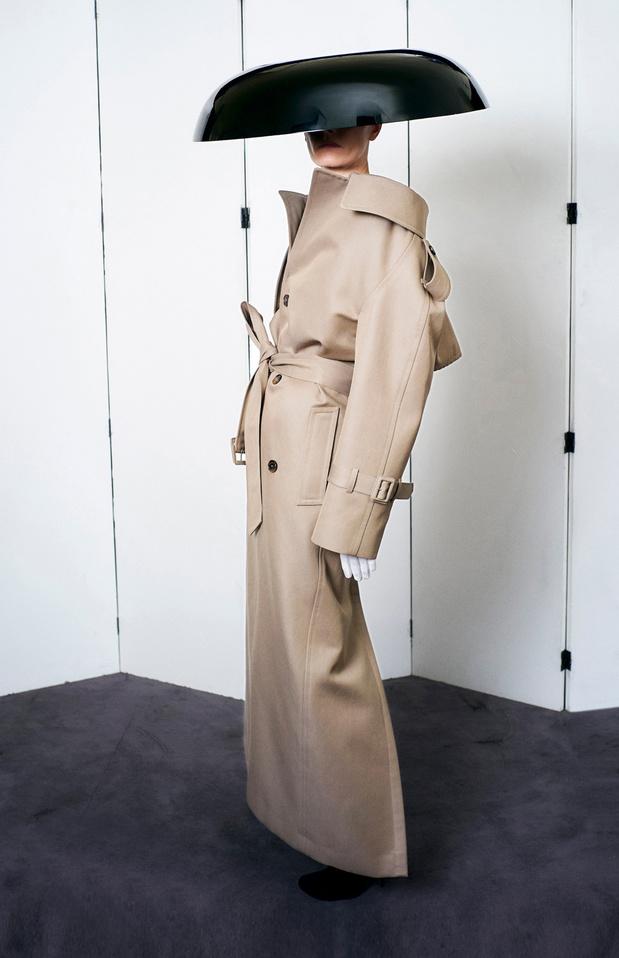Haute couture, a rare artistic gesture beyond the exorbitant prices<
8XL men's suits, bought at Kiabi for less than 100 euros and transformed into refined outfits for women: on the sidelines of haute couture week, an elitist and exclusively Parisian event, which ends on Thursday , the fashion historian Olivier Saillard offered another look, in the “Moda povera” parades-performances.
This "poor fashion" project refers to "arte povera", an Italian artistic movement of the 1960s which celebrated the creative gesture and consisted of making meaningless objects meaningful. Olivier Saillard asked for little hands retired from the big houses, such as Madame Grès (which no longer exists) for the draping techniques.
Axelle Doué, model who had worked with Madame Grès, shows the incredible transformation of extra-large pieces into haute couture suits.
Exercises in volume
The cost of tailoring is multiplied by 20 compared to basic pieces, due to haute couture techniques "which cannot be improvised". "We think that haute couture is embroidery. But it's volume, model making. Deciding that the volume is going to be far from the body is an exercise", explains Olivier Saillard.
The Jean Paul Gaultier collection made by the guest stylist, the Japanese Chitosé Abe from Sacai, is the fruit of a similar exercise.
Layered jeans serve as the basis for voluminous dresses, the trench coat is transformed into an architectural bustier dress and a corset underlines the quilted volumes of a puffer dress.
In Dior's "tailor" haute couture workshop, the beige and navy blue jackets seem identical, but the fabrics are different, which requires interlining and finishes on a case-by-case basis for silhouettes that are wider this season . Artistic director Maria Grazia Chiuri examines them in the making yard. "She says 'I want it to be stiffer', and then we undo, we redo the interlinings," a seamstress told AFP.
Invisible luxury
In the "fuzzy" workshop that makes the dresses, two little hands spend several days creating invisible stitches on an evening dress. Anti-bling, "contemporary and timeless": this is how Maria Grazia Chiuri defines the essence of haute couture.
The French couturier Christophe Josse also claims the "subtle and intellectual luxury which is not ostentatious and requires more references". Wide cream jersey trousers are worn with metal-set sandals adorned with a blown glass cabochon inspired by a 14th-century model featured on a picture rail in the British Museum.

The cashmere "trucker jacket" is adorned with curly alpaca, 19th century Italian lace brightens up a monastic dress, and a long pale blue shirt dress with a reverse collar, simple in appearance, demands work on the hems and volumes...
"It's the craftsmanship that interests me, the relationship with embroiderers, feather workers, those people who take us to the heights rather than a sequined dress with a 10-meter train", says Christophe Josse to AFP.
The kimono sleeve
"You have to stop thinking that customers want to wear embroidered meringues, they ask me for things to live and be in the action", says Julien Fournié, who dresses queens and princesses of Arab countries.
Haute couture is about the cut, not "ruffled frills", he emphasizes, proud of his kimono sleeve which gives fitted dresses a nice look and comfort.
"We have sometimes reached insane prices because there are 290 hours of embroidery or 390 hours of featherwork (...) We sell hourly time and French know-how", summarizes Julien Fournié.
According to 24-year-old Charles de Vilmorin, who is presenting his second haute couture collection, "it's quite a move". "Haute couture wants to be more accessible, with its pieces, as in the way it is approached with digital fashion shows," he told AFP.
Read also: Charles de Vilmorin, 24, in the big leagues


 Tags:
Tags: Prev
Prev







